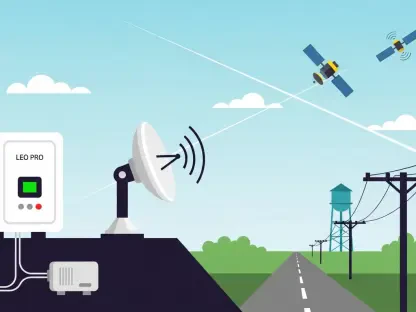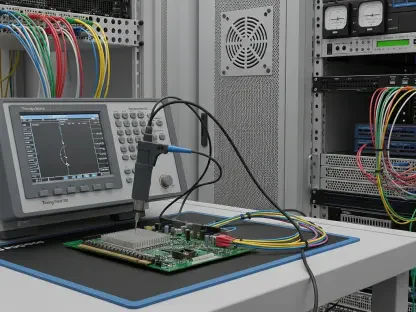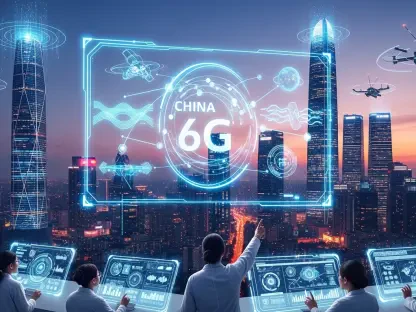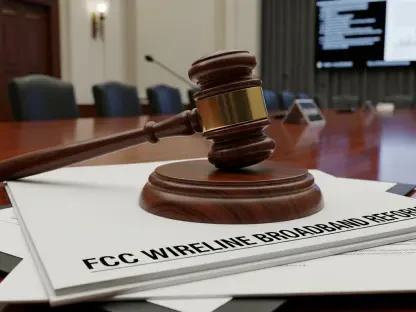In the ever-evolving world of telecommunications, Vladislav Zaimov stands out as an expert with profound knowledge in enterprise telecommunications and risk management of vulnerable networks. Today, he sheds light on the latest developments in 6G technology, demonstrating the ripple effects it might have in the coming years.
Can you tell us about the current progress of 6G development according to the 3GPP?
3GPP has begun comprehensive studies focused on 6G radio and system architecture. This marks a significant turning point where the conceptual elements of 6G begin to take a more defined shape. The studies aim to explore various aspects needed for 6G, serving as a precursor to formal specifications.
What are the key timelines set by 3GPP for the development and launch of 6G?
The current roadmap indicates that the first specifications should be completed by 2027. Building on past experiences with introductions of 4G and 5G, final standards for 6G are anticipated by 2029, aiming for commercial availability by 2030. However, early deployments by ambitious operators can’t be ruled out.
What is expected to be included in the first specifications for 6G, and when should they be completed?
These initial studies will narrow down the detailed technology elements that will be part of the 3GPP Release 21. The specifications are set to conclude by the first quarter of 2027, providing a foundation for the creation of a comprehensive 6G standard.
How do Nokia and Ericsson predict AI will influence 6G?
Both Nokia and Ericsson foresee AI as a critical component. They’re looking at AI to enhance network performance, simplify operations, and offer robust capabilities, particularly in areas like model management and data collection. AI isn’t just a novelty; it’s expected to be deeply integrated into the architecture.
What is spectrum sharing, and why is it important for 6G?
Spectrum sharing allows the concurrent use of the same spectrum bands for both 5G and 6G, a necessity given the scarcity of available airwaves. This approach seeks to enhance efficiency in deploying 6G networks without needing entirely new spectrums, a challenging feat given current limitations.
How does 5G-6G multi-radio access technology (RAT) spectrum sharing differ from previous generational spectrum changes?
The design of 5G notably supports more seamless spectrum sharing with 6G. Unlike previous generations, where new bands were delineated, 5G’s structure supports sharing without the interference and overheads formerly imposed by LTE common reference signals. This improves both flexibility and efficiency.
In what ways do Nokia and Ericsson believe MRSS will impact early 6G rollouts?
MRSS is anticipated to be fundamental to early 6G deployments by maximizing existing spectrum use. Both companies emphasize that this technology will allow smoother transition periods and broader initial coverage, facilitating a more economical and efficient rollout process.
Can you explain the role of Open RAN in the future of 6G according to Ericsson?
Ericsson suggests that Open RAN will provide a competitive edge by offering a set of open interfaces, which are critical for encouraging innovation and diverse vendor collaboration. This suggests a more modular and flexible architecture, ushering in a new standard for network ecosystems.
What are the key interfaces that Ericsson expects in the 6G RAN?
Key interfaces will likely include the connection points between the 6G RAN and the core network, as well as between 6G base stations themselves. These open interfaces are pivotal in supporting a healthy commercial environment and driving technology forward.
How do Nokia and Ericsson view the role of AI and machine learning in the 6G landscape?
They’re positioning AI and machine learning as instrumental, with applications influencing everything from enhanced receiver performance to network management. The AI components are envisioned to elevate 6G’s ability to deliver smarter, more responsive services.
What are some specific AI use cases in 6G mentioned by Ericsson?
Ericsson points out several potential AI applications, including improved receiver performance, aiding mobility measurements, and enhancing location positioning in handsets and devices, indicating vast possibilities for AI in optimizing network efficiencies.
How do the timelines for 6G compare with those of 4G and 5G development in the past?
The timeline set for 6G reflects a rhythm similar to 4G and 5G, with rigorous studies followed by formal specifications and eventual commercial release. The projected schedule posits 6G’s role as the natural successor in the decadal evolution of cellular technology.
What challenges might arise during the transition from 5G to 6G?
Transitioning between generations always presents challenges, such as ensuring backward compatibility and managing coexistence in spectrum use. There might also be hurdles in terms of infrastructure readiness and the need to push for globally harmonized standards.
Are there specific applications or technologies, other than AI, expected to be integral to 6G?
Aside from AI, technologies like advanced spectrum sharing, sophisticated RAN structures, and new forms of connectivity and latency management might become integral. Enhanced security features will likely also play an essential role in shaping future networks.
How might dynamic spectrum sharing (DSS) in 4G and 5G pave the way for MRSS in 6G?
DSS has already set the groundwork by introducing the concept of efficient spectrum utilization across generations. This lays the technical and practical foundations which MRSS will build upon, refining these processes for even more effective dual-use in 5G and 6G.
Do you have any advice for our readers?
Stay curious and forward-thinking. As technology evolves, keeping an eye on these developments will be crucial. Understanding today’s trends could provide valuable insights into tomorrow’s possibilities, especially in an age where connectivity is the backbone of innovation.









